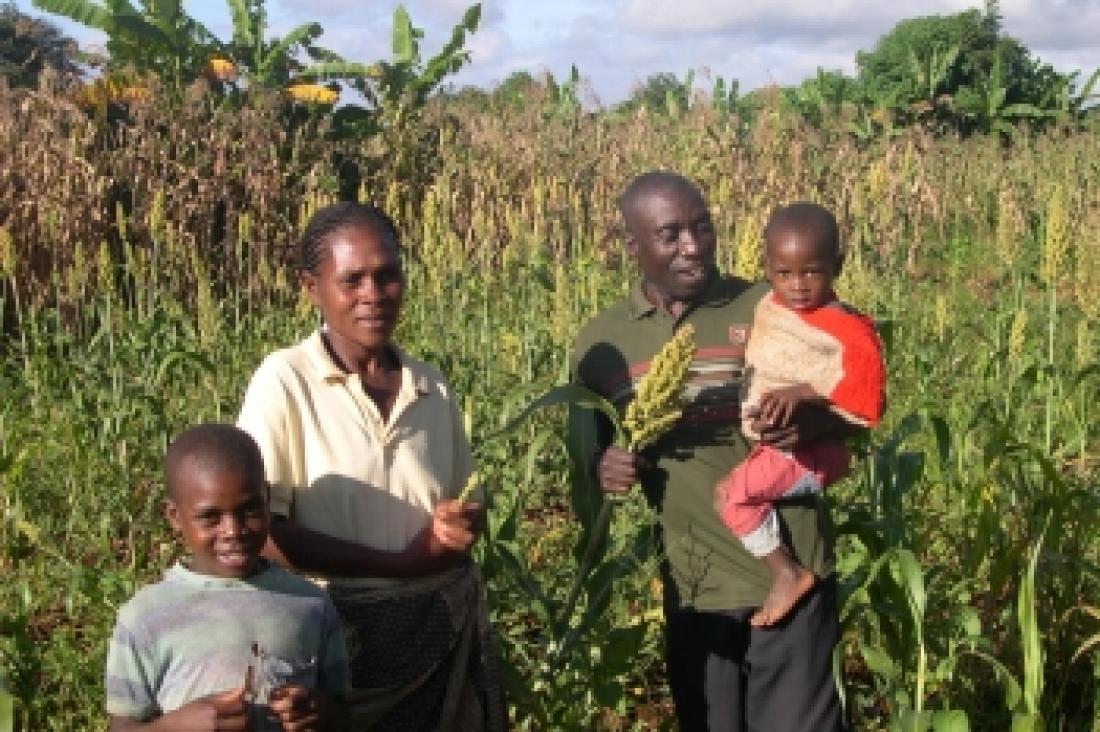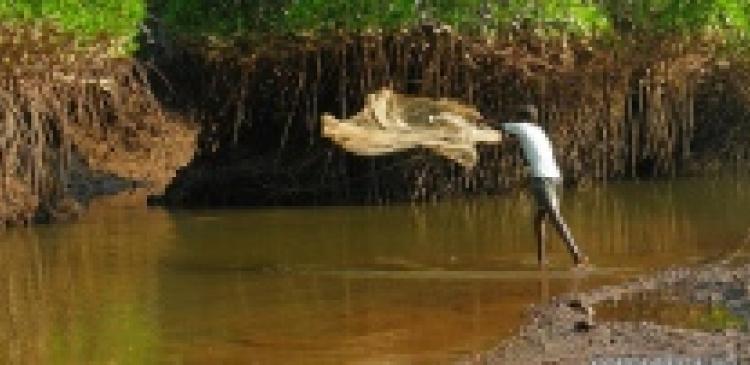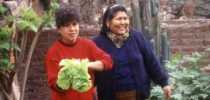ECOHEALTH: IMROVING THE HEALTH OF PEOPLE AND THE ENVIRONMENT
Research carried out using ecosystem approaches to human health, pioneered by IDRC in the 1990s, has significantly improved health and welfare around the world. For example:
* In Mexico, DDT use was eliminated with no increase in malaria.
* Chagas disease has been addressed in Guatemala through locally developed improvements to house construction.
* Mercury poisoning was halted in the Amazon, by finding alternatives to the slash and burn agriculture that released mercury into the water.
* Children’s health has been improved in Malawi by growing legumes instead of corn.
Ecohealth, as the approach is known, brings together scientists, decision-makers, and community members to work on people’s health by improving the ways people interact with their environment. The goal: improve the health of both people and the environment, simultaneously.
Pioneering a comprehensive approach
IDRC’s work on the links between environment and human health builds on decades of support for health research.
From an early focus on biomedical research, in 1992 IDRC launched its Health, Society and Environment program, which brought together specialists in different fields to explore how environmental factors influence health. With the creation of IDRC’s Ecosystem Approaches to Human Health program in 1996, a larger range of expertise was brought to bear on a wider spectrum of factors.
The Soils, Food and Healthy Communities (SFCH) project, underway in the northern Ekwendeni region of Malawi since 2000, shows how all the pieces fit together. Child malnutrition, degraded soils, and food insecurity are all problems there. Yet the 30-member SFHC team (which includes agronomists, sociologists, and nutritionists) believed they could all be addressed if farmers rotated their traditional corn crops with legumes such as groundnuts and pigeon peas.
So far, more than 7,000 farmers in the region have signed on to the project. The results: healthier children, improved soils as legumes return nitrogen to the soil, and larger harvests without the use of fertilizers. The community’s food security has increased and farmers have improved their incomes by selling surplus crops.
The human dimension is key
Such success comes not just from sound science but by tapping community resources. Team leader Rachel Bezner Kerr, a geographer at the University of Western Ontario, says SFHC relies upon “volunteers interested in learning about these legumes, who teach other farmers.” Innovative events such as “recipe days” and discussion groups involving parents and grandparents ensure that families know the best, tastiest ways to prepare the new crops.
To promote ecohealth’s innovative research approach, IDRC spearheaded the creation of several Communities of Practice in Ecohealth. Located in Latin America and the Caribbean, Africa, and Canada, these networks provide opportunities for researchers and students to study and apply transdisciplinary research methods. They also develop ecohealth curriculum materials for universities, communicate research results, and provide resources for researchers and decision-makers. In Africa and in Canada, the Communities of Practice provide field-work grants for graduate students to apply ecohealth in obtaining their degrees.
A broader reach
Thanks to programs such as these, over the last 15 years, ecohealth has become a field of research in its own right, with increasing influence and impact in a growing number of countries.
At IDRC, the Ecohealth program is now turning its attention to global issues such as emerging infectious diseases — SARS, avian influenza, and H1N1 influenza, for example. This search “for a better understanding of disease ecology to prevent the spread of old and new plagues,” says Jean Lebel, Director of IDRC’s Agriculture and Environment program, is an area where the Centre is anticipates achieving new lasting impacts.
-------------------------------------------------
ENVIRONMENTAL ECONOMICS: SAVING LIVES, MONEY AND ECOSYSTEMS
Environmental economics gives developing countries a unique tool to make development sustainable and to leapfrog over many of the mistakes that industrialized nations have made.
IDRC has worked with researchers in developing countries to build this field of applied research, which provides decision-makers facing tough economic and environmental choices with vital evidence, analysis, and recommendations.
Environmental economists shed light on underlying causes of environmental degradation and apply economic principles to design solutions that benefit people and the planet. For example, after the October 1999 super cyclone in Orissa, India, researcher Saudamini Das assessed the storm-protection value of mangrove forests. She calculated that a hectare of mangrove land stopped damage worth US$43,000 during the cyclone. She also concluded that more than 90% of the 10,000 lives lost would have been saved if the area’s mangroves had been intact.
Saving lives and money
Now in India, “whatever mangroves are there, they are being protected” says Das, whose research was supported by the IDRC-funded South Asian Network for Development and Environmental Economics. Her groundbreaking findings were published in 2009 in the official journal of the United States National Academy of Sciences. They were also featured in the Summer 2010 issue of Nature Conservancy magazine, where it was noted that “Nature Conservancy scientists point to Das’ work as some of the strongest evidence to date that protecting mangroves not only saves lives but also saves money.”
IDRC’s field-building effort began in 1993 with the creation of the Economy and Environment Program for Southeast Asia. IDRC and donor partners also helped establish networks in South Asia (1999), Latin America (2005), and Africa (2007). In 2008, the Cairo-based Economic Research Forum launched a fledgling network in the Middle East with IDRC support. By now, the networks in Asia, Africa, and Latin America have produced a large body of research, some of which has begun to influence environmental policies.
“Far and away the most impressive academic progress in the field of environment and economic development in the past 15 years has been the flowering of original research on local environmental problems in poor countries by scholars residing in those countries.”
Sir Partha Dasgupta, Frank Ramsey Professor of Economics, University of Cambridge, from his Foreword to Valuing the Environment by David Glover
-----------------------------------------------
AGROFORESTRY: FROM TRADITIONAL PRACTICE TO SOLID SCIENCE
Three decades of work by the Nairobi-based World Agroforestry Centre has turned a traditional practice — growing trees and shrubs alongside crops — into a science-based discipline. That science, agroforestry, is now recognized around the world for its potential to provide food, fodder, increase crop yields and incomes, protect watersheds, provide energy, prevent land degradation, and more. IDRC was a prime mover in the centre’s creation.
IDRC advisor John Bene, a Canadian forester who led a visionary study on tropical forestry research priorities in 1975, was the catalyst for the creation of the International Centre for Research on Agroforestry (ICRAF), as the centre was known until 2002. That study found that forestry research around the globe was sporadic, scattered, and uncoordinated and called for a new approach to the agricultural and forestry problems of developing countries.
Thus began a chain of events that led to ICRAf’s creation in 1978. Since then, interest in agroforestry and support for it has continued to grow. Asthe centre's Director General Dennis Garrity told the 2009 World Congress of Agroforestry: “Agroforestry has now come of age as an integrative science and practice. It is at the heart of the solution to so many of the challenges we face.” It can enhance food security and improve rural livelihoods; increase soil fertility; absorb atmospheric carbon, a major greenhouse gas; and provide farmers with the technologies to restore degraded land.
IDRC and the Canadian International Development Agency have supported the agroforestry centre’s activities since its beginning. And in recognition of Bene’s work, IDRC awards the John G. Bene Fellowship annually to a Canadian graduate student of agroforestry in the developing world.
“The 500 million smallholder farmers in the tropics stand to benefit tremendously from the greater recognition, appreciation and promotion of the right trees in the right places so that such trees may transform both lives and landscapes.”
Dennis Garrity, Director General, World Agroforestry Centre
----------------------------------------
URBAN AGRICULTURE: ROSARIO, ARGENTINA REAPS THE BENEFITS
Thousands of families in the city of Rosario, Argentina, were able to feed themselves during the country’s recent economic crisis by growing their own food. Now more than 800 community gardens in the city feed some 40,000 people and produce surplus for sale.
Urban agriculture has become a permanent part of the city’s fabric, thanks to research funded by IDRC, technical support from the UN Urban Management Program, and the support of local governments. IDRC was the first major international agency to undertake formal research in the field of urban agriculture in 1983. It has since supported research to advance urban agriculture in Africa and Asia, as well as Latin America.
Vilma Cala is typical of the new city farmers. The mother of four had to turn to soup kitchens when the value of the peso plummeted in 2002. “It was terrible, having to depend on others,” she said. That was before she started tending a large garden in a field criss-crossed by inactive power lines. Today, she feeds her family, sells fresh vegetables at one of seven farmers’ markets, and produces cosmetics from natural ingredients alongside 12 other urban farmers. Others prepare platters of fresh fruit and vegetables for sale, as well as soups and pies.
Research launched in 2003 helped Rosario move from crisis management to a long-term strategy for integrating agriculture into urban planning. This included an inventory of vacant lands onto which to expand gardens, the provision of water sources, and the creation of garden parks to provide food and recreation facilities in residential areas.
Rosario is now an international showcase for city farming.
“What is clear is that urban agriculture is here to stay. While no panacea for any global level of food insecurity, it provides millions with some secure access to food and reduces their exposure to volatile changes in price outside their control.”
Mark Redwood, Program Leader, Climate Change and Water, IDRC





